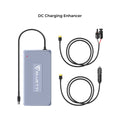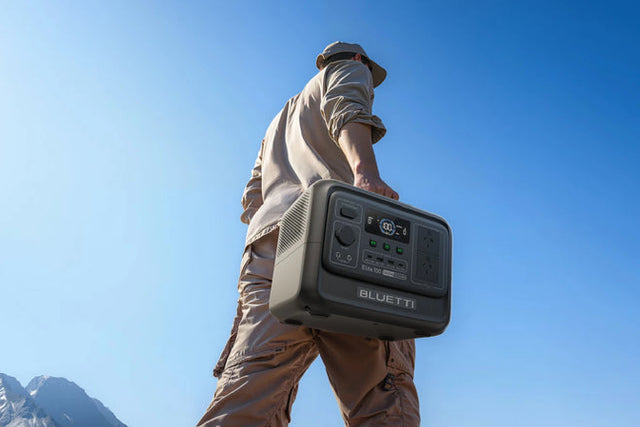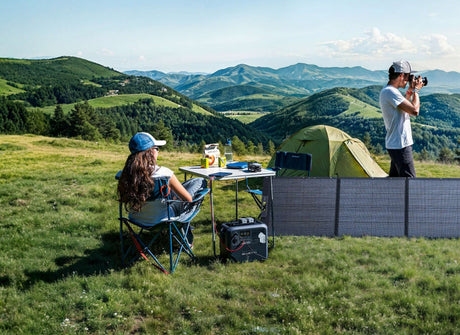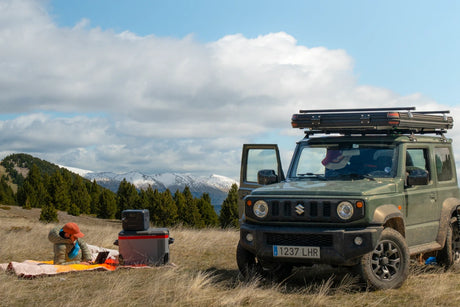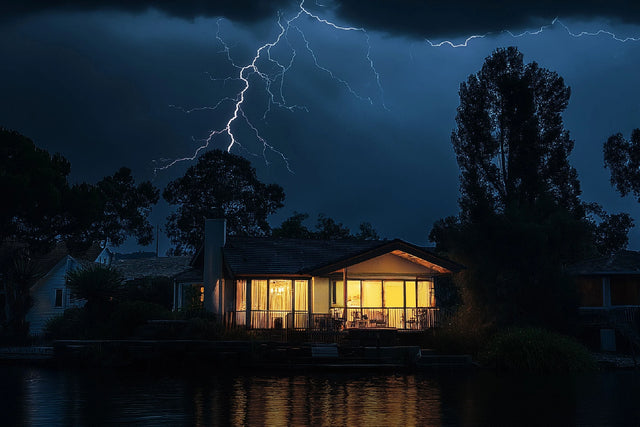Whether it's to reduce electricity costs or just a desire to live unplugged from the rest of society, an increasing number of people are choosing to go off-grid. Even though the idea sounds quite simple in theory, executing it can be costly and challenging if you're not prepared. If you are thinking about living off-grid using solar panels and generators, make sure to read this article and discover some important tips before taking the plunge.
What Is Off-Grid Living?
Before we get into the details of how to get off the grid using solar panels and generators, let's look at what off-grid living is actually all about.
The term "off the grid" can be used for individuals who choose to disconnect their houses from the national electricity grid. Today, off-grid living is still viewed as the ultimate path to rough living. However, it doesn't need to be looked at that seriously.
Off-grid living can even mean people produce and use their own utilities, such as water, gas, and electricity produced from solar systems, which are one of the most widely used options.
Generally speaking, self-sustainable off-grid homes are quite popular in areas that are isolated from common governmental utilities such as electricity.
Is It Possible to Go Off-Grid Using Solar Panels and Generators?
When it comes to producing your own electricity, there's perhaps no eco-friendlier technology more efficient and accessible than solar panels.
For the most part, off-grid living using solar panels is entirely possible. Nevertheless, that's just a single piece of the puzzle.
To sustain an off-the-grid lifestyle, you will require some place to store all the solar energy produced by your solar panels.
And just like solar panels are the most efficient and accessible for electricity generation, solar generators are the ultimate best technology available to store your off-grid solar energy.
Thus, in simple words, you can go off-grid using solar panels and generators.
How to Go Off-Grid Using Solar Panels and Generators
In this section, we will take an in-depth look at how you can get off the grid using solar panels and generators.
Step #1 – Know What's Legal When Planning to Go Off-Grid with Solar
Off-grid living with solar panels and generators is legal in Australia. Generating and using your own power with solar energy is legal. As a matter of fact, it's your right. You can even sell any surplus power back to the local power grid.
Nevertheless, it is crucial that you abide by local building regulations. We strongly recommend you do some research on your own on the subject as well.
Step #2 – Calculate the Number of Panels You Need to Go Off-Grid
The number of solar panels you need to go off-grid depends primarily on the electricity you consume. Therefore, the simplest way to figure out the size of your required solar system is by looking at your electricity bill. It would include the total amount of kW your family used in the period. You can divide the total kW by the number of days to get daily kW consumption.
For instance, your quarterly bill mentions that you have consumed 2000 kW for those three months. The calculation would work in the following way: 2000kW / 90 days = 22.2kWh average daily consumption.
If you wish to go entirely off-grid, you will need a solar system that can produce power to cover this estimated daily requirement. Note that this doesn't mean you will need 22.2kWh of panels, as panels generate energy for multiple hours every day. In this particular example, an ideal amount would perhaps be 5 to 6kWh of panels. For a hybrid system, when you're still connected to the grid, you could go with a smaller solar system (e.g., 3kW and use the grid as a supplement).
Determine the Peak Hours of Sunlight Your Area Receives
Besides electricity consumption, you also need to determine the number of peak hours of sunlight your area gets on average. Bear in mind that peak hours of sunlight don't equal the time period between sunset and sunrise. Rather, peak hours of sunlight refer to the amount of time the sunlight reaches an average of 1000 watts per square meter.
In simple words, peak hours of sunlight are the amount of time the sun is at its most powerful, enabling the solar panels to work most productively. If you reside in a place such as Adelaide with an extremely high peak sunlight rate, your solar system won't be as big.
On the other hand, if you reside in a less sunny area, you might have to invest in additional solar panels to generate the same amount of electricity you would with a less number of panels in a sunnier area.
Step #3 – Ensure Your Off-Grid Solar System Doesn't Exceed 100 Amps
There's a very strong reason why contemporary charge controllers for solar systems don't exceed 80 amps. Using anything higher than this can lead to a number of different problems.
For instance, if you make an error with extremely high levels of current, you can put your life at risk and ignite a fire in your home.
In addition, the majority of solar batteries in an off-grid solar system cannot provide such high currents the same way car batteries do. They're just not made the same way.
Thus, if you require additional power with your solar system, we suggest you increase the total voltage, for instance, from 12 volts to 24 volts to 48 volts.
Step #4 – Don't Buy Sun-Tracking Panels
Sun-tracking panel systems are innovative, and they definitely increase your electricity generation. Nevertheless, you will probably get more for your money's worth by purchasing a larger number of solar panels instead of getting a solar tracker.
Additionally, solar panels can last you over 25 years in certain cases. The primary reason is that there aren't any moving parts in the system. However, a sun tracking solar panel is a mechanical device and needs increased maintenance.
Step #5 – Ensure Your Solar Panels Are Accessible
It's crucial to install your solar panels in a manner that makes them easily accessible. This is because the only kind of maintenance your solar panels will need is cleaning. With time, your solar panels are going to collect debris and dust. Therefore, to enhance their performance, you'll have to wash them.
Its recommended cleaning your panels thoroughly every few months. Doing so can increase the performance of your system by up to 12%.
Therefore, it's sensible to place panels in an easily accessible location. This way, you can easily reach them and wash them when they get dirty.
Step #6 – Get a Battery Monitor
Battery monitors are incredibly useful when it comes to getting important details about the existing condition of your solar battery. The recent battery monitors can allow you to remain alert of any problems that come up by bringing your attention to your off-grid solar system.
This information is imperative, particularly if you're going off-grid for the first time. Installing a battery monitor will help you track your accumulated amp-hours by tracking your home's energy consumption.
A battery monitor is going to indicate the net amps entering and leaving your battery bank along with the net amp-hours consumed since the previous full charge. Moreover, they will even indicate other things, including battery temperature, voltage, and the total percentage of battery capacity.
Step #7 – Use Energy-Efficient Appliances
Once you go off-grid and use solar power for electricity generation, the last thing you would want is to waste energy. Every bit of electricity produced is valuable, and installing energy-consuming appliances can drain it fairly quickly.
For instance, a simple thing you can do to cut down the total energy you consume is to switch from incandescent bulbs to LED bulbs.
LED bulbs consume 75% lower power and last 25 times longer than incandescent bulbs.
Step #8 – Invest in a Backup Energy System
Going off-grid with a solar system is a major step to residing in a more sustainable, green lifestyle with the ability to run your house the way you like.
However, since solar panels depend on the weather/sun to generate power, don't expect your solar system to be entirely foolproof. There's surely going to be a time when you will have to depend on a backup system. In such events, you will have peace of mind knowing that you have an additional system to depend on in case your primary system isn't able to produce any energy, whether that's because of mechanical failure or cloudy conditions. For instance, you can use the EP500 Pro as a backup generator in the event your solar PV system stops working.
Step #9 – Determine the Size of the Solar Generator You Will Need
The size of the solar generator you need depends on the size of the devices you will be running. If you plan to run an entire recreational cabin or vehicle, including climate control, you will require a large generator – perhaps even multiple. However, if you only wish to power a few lights or keep your food cold, your generator requirements will be much smaller.
To determine the size of the generator, you need to figure out your power requirements. To do this, add the wattage for every appliance you plan to use and multiply it by the number of hours you plan to use it. Next, add 20 percent to this calculation as a buffer. Divide the result you get by 0.8 to figure out the size of the generator.
For instance, if your total power needs are 2kWh, you will multiply 2 with 1.20 to get 2.4kWh. Next, divide the result by 0.8 to get 3kVA. In this example, you will need a generator with a minimum capacity of 3kVA.
Benefits of Going Off-Grid Using Solar Panels and Generators
Here are some reasons why you should go off the grid using solar panels.
1. Environmental Impact and Sustainable Living
Sustainable living is one of the primary benefits of a grid-free lifestyle, and using a renewable resource such as solar power is an excellent way to cut down your carbon footprint.
Keep in mind that a single premium-quality solar installation can easily last you up to three decades. This means for thirty years, you will be able to produce your own green energy from a single installation. This is much more eco-friendly than depending on any fossil fuel for a lengthy time period.
To put this into context, solar energy uses almost 50g of carbon dioxide per kWh compared to coal's 975g of carbon dioxide per kWh. This basically indicates that solar technology is 20 times more environmentally friendly than coal.
2. Reduced Utility Bills
Using your own renewable energy source eliminates your dependence on any kind of fossil fuel. Unfortunately, fossil fuels aren't sustainable or renewable and, therefore, as a limited resource, deplete over the years.
On the other hand, solar energy is a completely renewable resource that is not going to run out. Even though this renewable technology still has a somewhat higher initial investment cost, low monthly rates and maintenance costs can help make up for it over the long run. This article here sheds more light on the solar payback period.
3. Energy Independence
If you currently have a grid connection and need complete energy independence, then you're better off going with a hybrid solar system with backup power functionality. A hybrid system is perhaps going to be cheaper than a stand-alone unit, and you can use power from the grid as and when you need it.
Your Off-Grid Adventure Awaits!
Going off-grid using solar panels and generators is an excellent way to reduce your carbon footprint and lower utility bills. At Bluetti Power, we have a range of solar generator kits that can help you as you make the move towards off-grid living. Our portable solar panels are quite lightweight so you can even carry them around and take them along for a camping trip. Visit our products page to check out our collection of portable solar panels.
Shop products from this article
Be the First to Know
You May Also Like
For Australians exploring a sustainable future, harnessing solar power with a robust battery bank could be the perfect solution for our energy needs. Imagine tapping into the sun’s abundant energy...
For those looking to harness the sun's power and achieve true energy independence, Australia offers a treasure trove of solar battery storage options designed to meet a variety of needs....












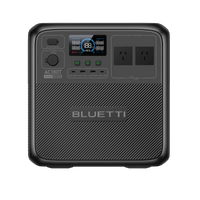












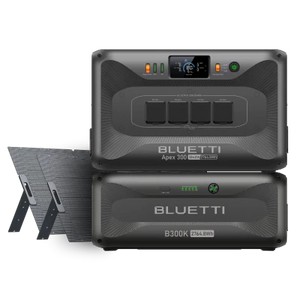





















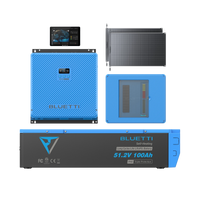





















![[Phased Out] BLUETTI B80P Expansion Battery | 806Wh](http://www.bluettipower.com.au/cdn/shop/files/202310025B80P_2000-2000px_4_4caa0c1c-4dab-4272-9e9b-2b7507e5bd81.jpg?v=1713777870&width=200)
![[Phased Out] BLUETTI B210P Expansion Battery | 2,150Wh](http://www.bluettipower.com.au/cdn/shop/files/2_08cf9ef3-03a4-4489-b641-d3edb8094896.webp?v=1716016566&width=200)
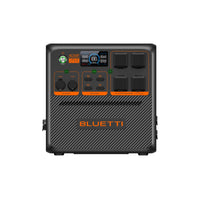


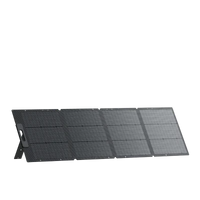


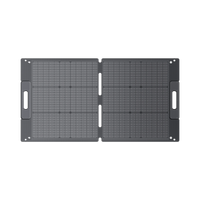





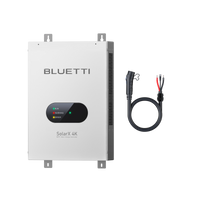






















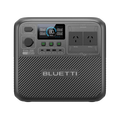

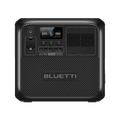






























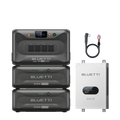



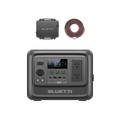





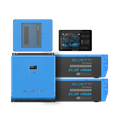














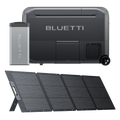




















![[Phased Out] BLUETTI B80P Expansion Battery | 806Wh](http://www.bluettipower.com.au/cdn/shop/files/202310025B80P_2000-2000px_4_4caa0c1c-4dab-4272-9e9b-2b7507e5bd81.jpg?v=1713777870&width=120)
![[Phased Out] BLUETTI B210P Expansion Battery | 2,150Wh](http://www.bluettipower.com.au/cdn/shop/files/2_08cf9ef3-03a4-4489-b641-d3edb8094896.webp?v=1716016566&width=120)


















